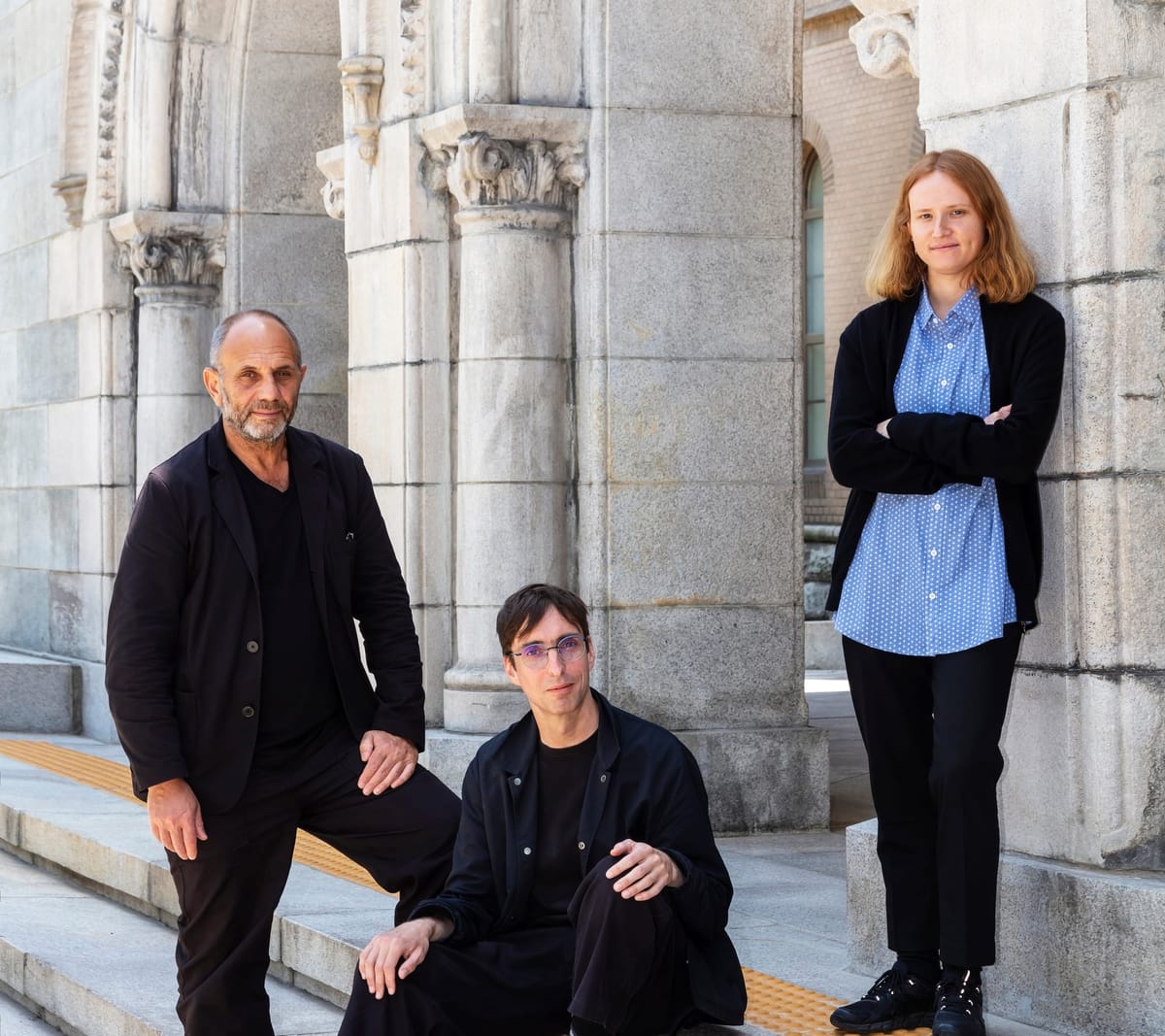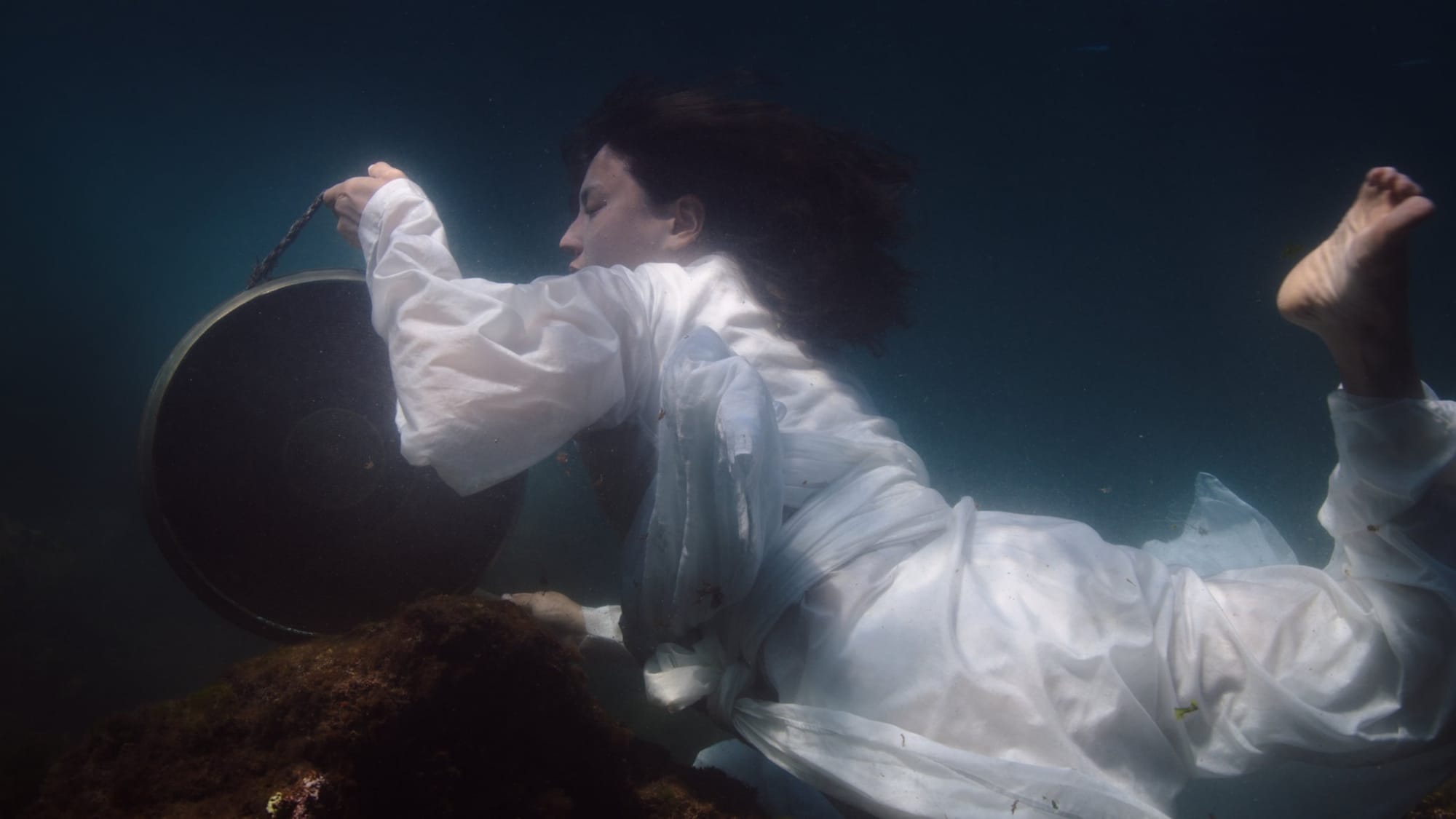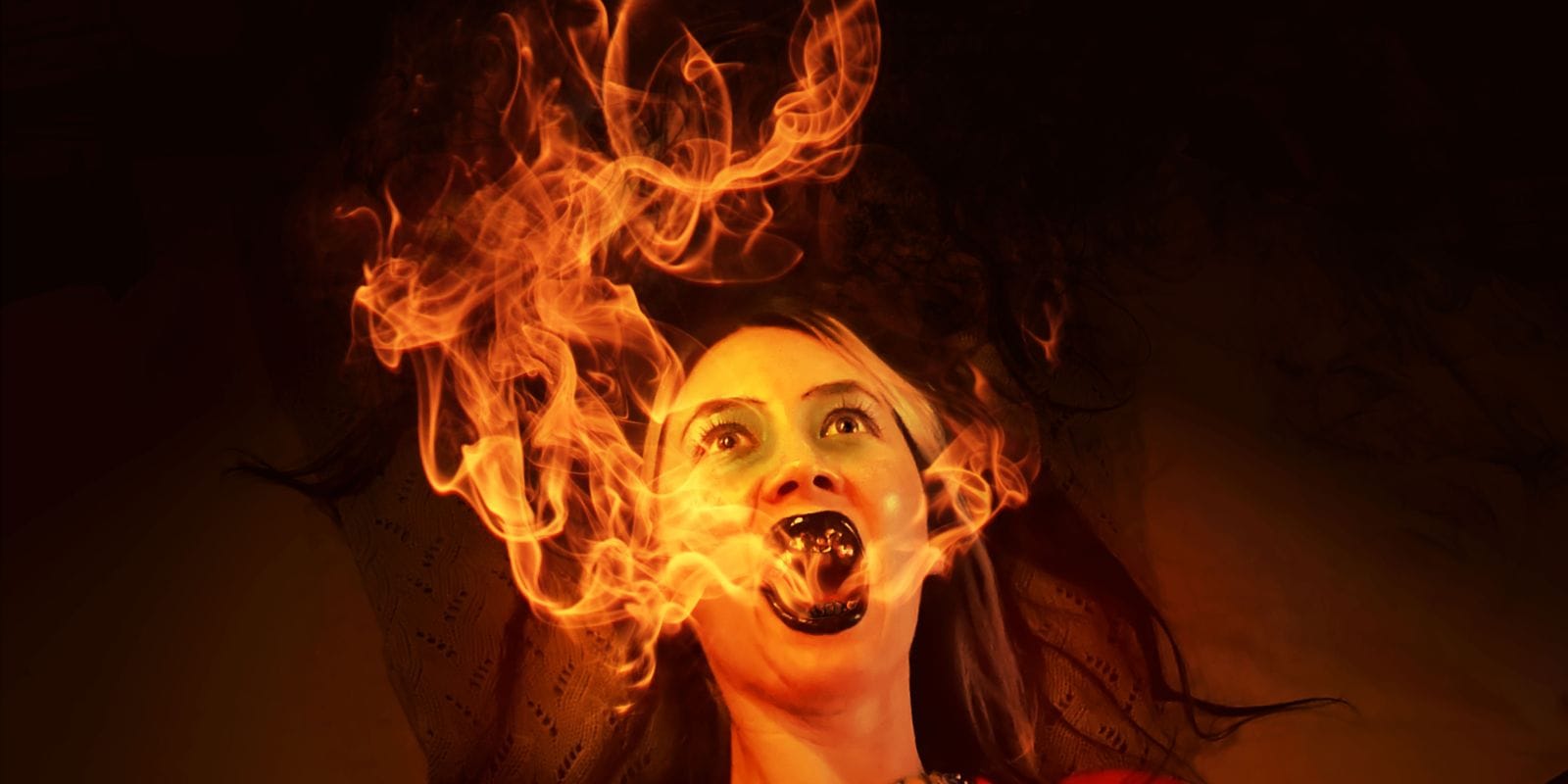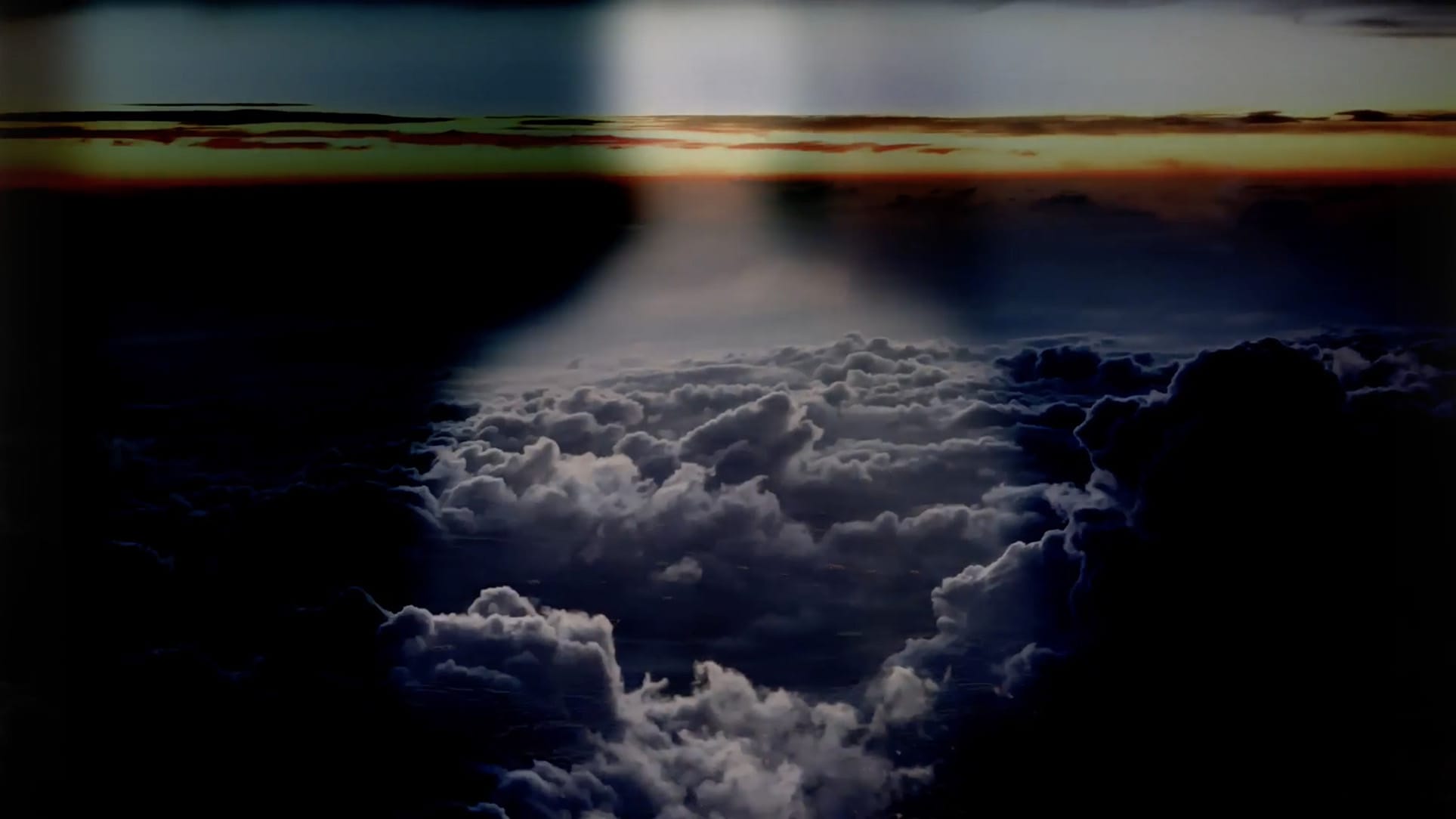
The 13th Seoul Mediacity Biennale, titled Séance: Technology of the Spirit, opens in August 2025. The biennale was founded in 2000 as a space to engage with new developments in media and the changing fabric of the city. Exhibitions and programs are centered at Seoul Museum of Art, and there is an itinerant and multiform pre-biennale program that is designed to preview the show in varying locales while also presenting the permanent collection of the museum.
This edition of Seoul Mediacity Biennale is being organized by Anton Vidokle, Hallie Ayres and Lukas Brasiskis of e-flux, who curated the Shanghai Biennale two years ago. On that occasion they elevated the status of the moving image – even giving the biennale the title Cosmos Cinema. As they state, their plans for Seoul include structuring a film program so that it is not just a parallel screening series, but actually operates as an extension of the exhibition.
From an engagement with Cosmism to the idea of a séance, which likewise suggests an upward trajectory, though this time through the spiritual. Cinema is once again an animating concern, and this extends to the positioning of technology in the conceptual framework of the biennale. We spoke with the team about continuing on from their work in Shanghai, what they are developing for Seoul and why there need not be a distinction between art and life.
Two years ago, in 2023, you all worked together on the Shanghai Biennale. Now you move on to Seoul. Can you compare the art scenes in the two cities? What methods did you operate with in Shanghai that might be generative for you in Seoul?
Anton Vidokle: China and South Korea are profoundly different in terms of culture, history, and social structures, so it doesn’t feel accurate to draw comparisons between them. In both cases, our focus hasn’t been on the “art scene” as such, but rather on learning how the themes we’re working with intersect with local histories, philosophies, cosmologies, and artistic practices. This is always a complex process, especially given the limited time – less than a year – to research and prepare a biennial. The volume of knowledge is vast, and navigating it requires a steep and focused learning curve.
Hallie Ayres: To that end, we’ve been focused quite intensely on understanding the Korean context as it relates to the themes of our exhibition. The Korean peninsula is extremely rich in belief systems, religious practices, and folk traditions – which makes this the ideal setting for an exhibition of this sort – but we also wanted to understand how works that deal with these themes will be received by the general audience. We spent quite a while educating ourselves on the complex history of Korean shamanism, for example, and the team at Seoul Museum of Art even arranged for us to see a gut ceremony while on a research trip to Jeju island.

What unique spatial opportunities and challenges are you encountering at Seoul Museum of Art as you build your exhibition?
Ayres: In Shanghai, we were working with a setting that has a very distinct character: the Power Station of Art used to be a power plant. Seoul Museum of Art occupies a former courthouse, but it has been entirely renovated as a white-wall museum setting. Since part of our curatorial premise for this show is to produce an “exhibition as séance,” we’ve tasked ourselves with really transforming this white-wall space into an exhibition that feels completely different from a standard museum show. To that end, we’ve been fortunate to work alongside COLLECTIVE, a very talented architecture firm based in Hong Kong. We can’t reveal too much before the opening, but together we devised a scenography that tries to emulate the feeling of stepping into different realms that exist among our physical realm – the same sort of experience envisioned when tapping into alternative spiritual and metaphysical flows of energy in séances.
We’re also using color in a very particular way in the exhibition space. Color, light, and sound have always been used to particular ends in the practice of séances, and varying ideas around color theory have been around since antiquity. Goethe had his famous color theory, as did Aristotle and Ptolemy; Isaac Newton; Rudolf Steiner; artists associated with Bauhaus like Kandinsky and Albers; Le Corbusier; etc... In ancient Egypt and China, “color halls” were used for healing. Ayurveda is based on balancing energies inherent in the color spectrum. Color also holds symbolic meaning in Buddhism, among other religions. We are planning to incorporate color into the exhibition along these lines: color not as something purely aesthetic, but as an instrument that has psychological, physiological, and spiritual impacts. In short, color as a tool with decidedly material effects.
One last note on the physical space of the Biennale is that we’ve been fortunate to find a few off-site venues throughout Seoul that will also be crucial components of the show. For example, we’re collaborating with Nakwon Arcade to devote individual rooms to artists with important sound or music practices, and we’ll also install a dedicated Sound Room there, curated by our colleague Sanna Almajedi. Nakwon Arcade is one of the largest instrument shopping malls in the world. During the late 1970s and 80s, the surrounding area was also home to a vibrant club scene. This was concurrent with the economic boom in Korea, which included the development of the entertainment industry, so there was a spike in demand for instruments and music equipment. Apparently musicians used to hang out in the Arcade in the evenings and wait for nightclub and venue managers to call in need of a spare back-up guitarist or drummer to fill in for performances that night. So there was a whole ecosystem around this building. We’re really excited to include it as a venue, especially since sound and music are such critical components of spiritual practice. The Sound Room will also host a performance program throughout the run of the exhibition.

Last time out you referenced the word “cinema” in the title and theme of your show. This time you curate the Seoul Mediacity Biennale, which is part of a subset of biennales explicitly dedicated to media art or new media. What are your thoughts about the inclusion of moving image art in visual art biennales in general? What sort of intervention do you want to make in this biennale in regards to exhibiting the moving image?
Vidokle: There are actually quite a lot of biennials dedicated to media, moving image, and art-and-technology practices – they’re just not always as visible or widely discussed. The Seoul biennial was renamed Mediacity in the late 1990s as part of a municipal campaign to rebrand the city as a “media city” – a kind of image refresh. The name didn’t really catch on, but the biennial kept it. I think there was also an idea at some point to use digital billboards across the city to show artists’ work – something a bit Blade Runner-esque. In practice, though, if you look at its history – say, the first edition co-curated by Hans Ulrich Obrist in 2000 – it wasn’t especially media-focused. We recently revisited the catalogue and were struck by how current and relevant that show still feels.
At this point, the inclusion of film and video in contemporary exhibitions is no longer a novelty. It is no longer the 1970s or 1980s, when curators questioned whether video was art. I once heard that during a past edition of Documenta, video works had to be “smuggled in” by embedding monitors into wooden sculptures so they’d pass as objects. That kind of resistance is long gone – the art world has changed.
Lukas Brasiskis: As someone who curates and researches artists' films, I’m definitely interested in how the integration of cinema into exhibition-making has evolved beyond medium specificity. I agree with Anton that, today, what matters more is the kind of epistemologies and perceptual experiences that moving images can generate. For us, the question is not whether film belongs in a movie theater or museum, but how to foreground its affective and transformative potentials – especially when dealing with themes like séance and technologies of the spirit.

The title of the Seoul show is Séance: Technology of the Spirit. Cinema is often thought of as a séance, in both setting and format. How do you imagine the “exhibition as séance,” and how will you put that into practice when building the show?
Vidokle: For us, it’s essential that the form and method of the exhibition reflect the subject matter it engages with. We were recently in Tokyo and saw the Hilma af Klint exhibition at the Museum of Modern Art. The works themselves are visionary and radical, but the museography was completely conventional. It could have been a Picasso show. The format didn’t correspond at all to the spiritual, experimental nature of af Klint’s practice. That disconnect not only misrepresents her work, but also misses the opportunity to deepen public understanding of what she was trying to do.
So, in Seoul – as we did in Shanghai – we’re trying to find a form that resonates with the ideas we’re working through. In Shanghai, we worked with montage to organize the show, using it to structure the exhibition as a kind of cinematic space. In Seoul, we’re thinking about the exhibition as a séance – something immersive, experiential, and attuned to a different logic. That intention extends across everything: the curatorial structure, the design, the sound, the typography, the materials.
Brasiskis: As Anton says, the séance, for us, is both a metaphor and a method. It’s a way to think about presence and absence, visible and invisible, conscious and unconscious, but also to create an exhibitory model that resists linear narrative and didactism. Drawing from cinema, psychoanalysis, and spiritualism, we’re approaching the exhibition as a space where perception is altered and where different spatio-temporal logics – ancestral, subconscious, animistic – could coexist. Practically, this means experimenting with space, colors, and installation architecture inspired by the artworks themselves. Working hand-in-hand with COLLECTIVE, and the designers NONPLACE Studio, we want visitors to the Biennale to feel as if they’re entering an altered perceptual realm rather than just following an explanatory text.
Ayres: As part of our research for this exhibition, we had the privilege of visiting Rudolf Steiner’s archive and the Goetheneum, in Dornach, Switzerland. Steiner’s life work was centered around the idea that there should be no distinction between life and art: that a daily practice invested in art (among other things, like education and agriculture) could allow for an understanding of the ways in which our material realm and the spiritual realm are intrinsically intertwined. The village surrounding the Goetheneum is still committed to this ideal: people live in houses designed according to anthroposophical aesthetics; they cultivate gardens and drink bio-dynamic wines; they even have a hospital that still practices Steiner’s vision of holistic healthcare that incorporates eurythmy and art therapy alongside modern medicine.
When we think about devising an “exhibition as a séance,” we hope to impart the idea that there need not be a distinction between art and life. The works in the show speak to this as much as our curatorial premise hopes to underscore it. Hopefully visitors to the show will emerge from it experiencing reality in a slightly new way – a metaphysical change similar to how one feels after watching a film or participating in a séance.

Regarding the subtitle, tell us more about the idea of “alternative technologies.” What is a technology of the spirit, when we might possibly be at the dawn of an age of sentience in artificial intelligence?
Vidokle: I don’t think we can say yet that AI is sentient – or even intelligent in the way the term implies. Right now, it’s closer to an automaton, a concept Franco “Bifo” Berardi writes about a lot: a machine that automates processes and often accelerates authoritarian tendencies. We’re already seeing how algorithmic systems are contributing to rising nationalism, populism, and social fragmentation. The danger is that computational technology today is so powerful that it risks becoming totalizing.
In response to this, we’re seeing a renewed turn among artists and thinkers toward spiritual, esoteric, and mystical frameworks – much like at the end of the 19th century, when new technologies also sparked metaphysical inquiries. The word “technology” comes from the Greek techne, meaning art. Yuk Hui’s idea of “cosmotechnics” suggests that technology is not a universal concept – it can be shaped by different cosmologies. There are many ways to understand and practice technology beyond rationalism or automation. For us, this is a key point: there is an urgent need to imagine alternatives to the automaton.
Ayres: Similarly, there’s also an urgent need to expand our colloquial definition of technology as something that is limited to a computer, a circuit board, or machine learning, for instance. We’re invested in understanding both artistic practice as well as spiritual practice as forms of technology – but not the kind of technology that depends on the extractivist logics of industrial capitalism. In fact, these alternative forms of technology can be a means of subverting Fordist regimentation and anti-rationalism.
Something else that we’re hoping to refute is a sort of dogmatic distinction between spiritualism and science. In many cases, the two actually crave each other as a means of legitimation, yet the ideologues of the early modern period were quite strident about pitting them against each other. So it’s important that, when we talk about alternative or new technologies, we’re not talking about practices that are obscurantist or reactionary. For us, a technology of the spirit is inherently not a mechanical or financial technology, but a technology with social and political aims.

The last press release announces that a major film program will be organized as part of the biennale. Can you tell us more about what you have planned?
Vidokle: The challenge is to structure the film program so that it’s not just a parallel screening series, but actually operates as an extension of the exhibition – projected into the space of cinema. The cinematic apparatus has a kind of totalizing effect: once you’re in a dark room, seated in front of a screen, everything becomes cinema. So the question for us is how to reflect on that experience – how to draw a connection between the space of cinema and the world outside it. Which one is the dream? Which is the reality? Is it possible to reverse their relationship?
While working in Shanghai, we came across a beautiful story by Zhuangzi, a classical Chinese thinker who dreamt he was a butterfly. When he awoke, he didn’t know whether he was a man who dreamt he was a butterfly, or a butterfly dreaming he was a man. That disorientation, that metaphysical uncertainty, is very close to what we hope to evoke.
Brasiskis: Cinema has long been understood as a form of séance (in French it can mean a screening) – a place where absent presences reappear. As Jacques Derrida observed, film can make the dead appear more alive than the living. Therefore, from the outset, we intended for the cinema to become an integral part of the biennale and agreed with the Seoul Art Cinema, one of the city's most significant venues for cinephilic culture, to present a special film program in their theater. The program will consist of four thematic chapters: Speaking with the Dead, Ancestors Breathing, Psyche and the Screen, and Everyday Mysticism. The selected films explore cinema’s capacity to mediate between the material and spiritual realms, invoke ancestral presence, navigate the subconscious, and expose the sacred within the everyday.
The screenings will take place every Saturday throughout the duration of the biennale, and, as Anton says, we are also developing a performative frame to expand the cinematic experience beyond the movie theater setting and link it more closely to the exhibition’s broader spatial and conceptual architecture.
Can you tell us about your publishing plans? Are you exploring an alternative way of approaching printed matter?
Ayres: Right now we’re in the midst of working on a catalogue, jointly with inimitable editor Ben Eastham and design studio NONPLACE. It was important for us to use this opportunity to commission catalogue essays that speak specifically to this relationship between spiritual and artistic practices. I studied art history, and much of orthodox art history doesn’t acknowledge this relationship. This is partly because of general prevailing suspicions around new religions or spiritual and healing practices that are outside dogmatic religious tradition. But it’s also partly due to the fact that the prevailing history of modernism depends on linearity, and many spiritual practices are rooted in folkloric beliefs or alternative medicines that were viewed as contrary – and even oppositional – to modernism. So, for a long time, it was unfashionable and a bit taboo to acknowledge the profound impact that mystical and occult beliefs had on art history. To that end, we really hope that the texts in the catalogue could play a role in suturing this division.
What does your artist list say about the way you work and the type of artists you are drawn to?
Vidokle: Our colleagues at the museum told us that 29% of the artists in the show are deceased. That’s not incidental. The séance, at its root, is a method of communication with the dead. So this is a curatorial gesture – not one of nostalgia or mourning but of dialogue, trying to think across time and to engage with practices that may have been neglected, forgotten, or are still resonant today.
After summoning the spirits of the deceased artists you are working with, what do you think they will tell us about the world we live in today?
Ayres: Part of the popularity of séances – beyond the desire to reconnect with loved ones – hinges on the notion that the dead might be able to impart some sort of sacred knowledge about the machinations of the universe that is inaccessible to those of us who currently occupy the realm of the living. This sort of knowledge has a liberatory potential. In fact, the Fox sisters, who are responsible for the spread of spiritualism in the US, initially held their séances in the home of Amy and Isaac Post, radical Quaker abolitionists whose house also served as a station on the Underground Railroad. So, strangely enough, there has always been this linkage between speaking with the dead and emancipation.
However, this question presumes the existence of death. Death itself is a bit logically and ethically senseless. Perhaps the deceased artists in the show are really not deceased at all but simply inhabit different planes than our waking life.
